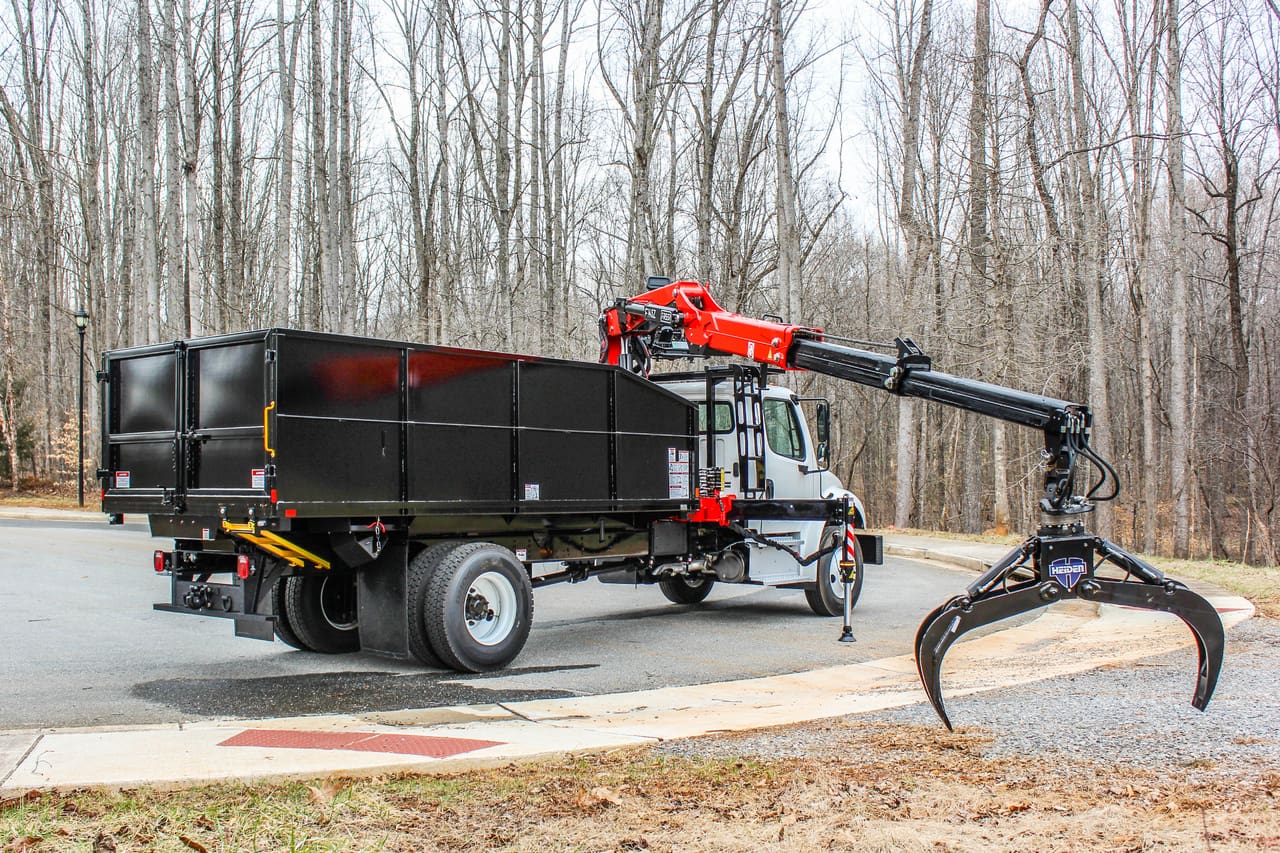
Before we jump into the topic of grapple trucks, and why they’ve become an indispensable piece of equipment for bulky waste management in the United States, let’s first define what bulky waste is.
Any discarded item too large or unwieldy to be disposed of like regular trash is “bulky waste.” And it’s everywhere. In cities and towns, bulky waste could be things like old mattresses, refrigerators, sofas, tables, TVs, bathtubs, dishwashers, and car tires. It’s things that you often see lying on the sides of roads. In a rural environment it could be brush, limbs and trunks of trees, or even roadkill.
Such items, typically unpredictable in weight and dimensions, are difficult to collect safely and efficiently. And this is where grapple trucks come in.
They have a knuckle boom crane that (unlike a stiff boom) can fold or articulate for better flexibility and reach. A variety of mechanical `claws’ are available to attach to the end of the boom to grab hold of bulk waste and lift material into the receptacle of the truck.
Configurations of Grapple Trucks
- Loader and body system: a grapple truck fitted with a dump body.
- Roll-off system: a grapple loads into roll-off containers that workers can fill and replace.
- Rear steer system: an operator’s cab mounted behind the chassis cab to control the grapple loader, and also drive in reverse.
- Rear loader and truck system: the loader of the grapple truck drops waste material into separate haul trucks. These then ply back and forth between the loading unit and landfill.
- Rear loader and trailer system: the loader mounted on the short-frame chassis of a grapple truck that hauls a trailer behind to collect bulk waste.
Advantages of Grapple Trucks
- Versatility: Grapple trucks can grab and pick up materials of all shapes and sizes. There are attachments (bunching grapples, log grapples, contractor grapples, demolition grapples, all-purpose grapples etc.) that suit different applications. This makes it possible to put a grapple truck to a variety of uses.
- Cost savings: Waste management companies use less manpower by employing grapple trucks, and therefore save money they would have otherwise spent on wages and other overhead.
- Safety: Waste management workers undertake risks (cuts, injuries, chronic back pain, etc.) when physically hauling bulky waste. They mitigate these risks when using an automated grapple truck. This reduces the insurance payment load for companies as well.
- Sustainability: Precision picking, using grapple claws, creates a lower chance of damaging surrounding landscape and vegetation in green waste applications.
Who Uses Grapple Trucks
# 1: Forestry
Felling trees is necessary for a variety of reasons. Workers must cut down infected trees to keep disease from spreading to healthy ones in the vicinity. They are cleared to maintain the right of way for utility companies. Overgrown trees have to be removed from private property as a safety measure to protect homes and lives. Grabbing and lifting hefty limbs, foliage, trunks, and branches is a major clean-up job, which is why forestry departments and tree-cutting companies are one of the major buyers of grapple trucks.
# 2: Waste Management
Municipal trash collection is another industry that is heavily dependent on grapple trucks for bulk waste hauling. Specially designed grapples, such as collection grapples and multipurpose grapples, are attached to articulated truck booms. These help with any job-specific needs during bulk waste pick-up runs.
# 3: Scrap Industry
Scrap yards collect, sort, and sell scrap metal in bulk to refiners who make new metal out of the material. When workers lift and move irregular pieces of broken or shredded metal manually, it’s not just hard work. It’s also risky. Grapple trucks offer the perfect durable and hands-free solution for scrap yard applications.
Grapples with four or five “tines” (fingers) load trucks and rail cars. Some are magnetized as well to sift and separate metals more efficiently.
# 4: Railways
Railway operations use grapples to lift and load old ties from rail tracks when they need to be replaced with new ones. Since grapple booms are mounted on trucks, they can easily travel long distances to service sections that need repair work. Tie bundle grapples and loose tie grapples are the most common.
# 5: Construction
Construction and demolition sites are full of bulky waste. This includes sections of broken concrete, piles of bricks, drywall, logs, lengths of pipes, and steel that need to be collected and carried offsite. Grapple trucks are dexterous enough to negotiate through crowded spaces in busy job sites to haul away all kinds of construction debris.
# 6: Storm Recovery
After a natural disaster, like a flood or a hurricane, clean-up efforts can be a complicated and lengthy process. Teams not only have to haul fallen vegetation, but other windblown items as well. This could include patio furniture, mattresses, broken roofs, or anything else the high winds have carried away. Hurricane clean-up contracts are priced by yardage, so the versatile nature of what a grapple truck can pick up with the right attachments makes the job both quick and cost-effective.
Looking to buy a grapple truck that is right for your business?
Custom Truck One Source has you covered!
We’re America’s first true single-source provider of specialized truck and heavy equipment solutions and we’re standing by to help you!
Call us at 844-282-1838 or email us at [email protected].

